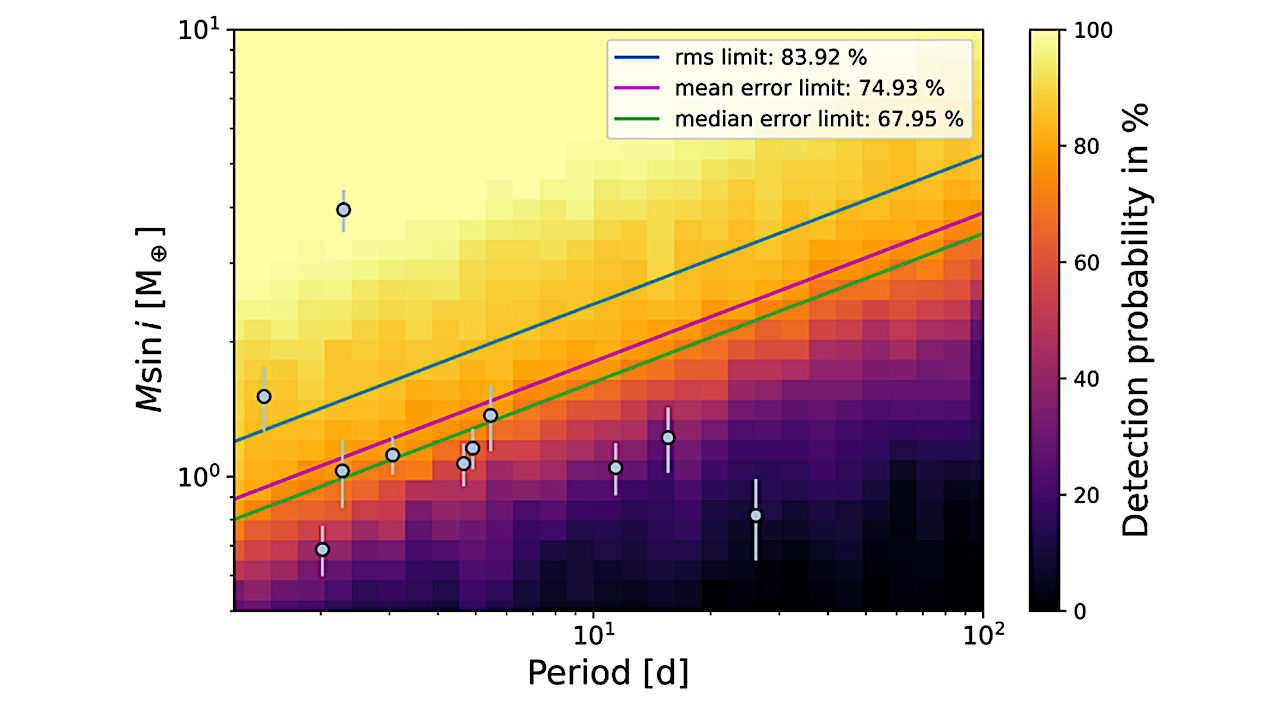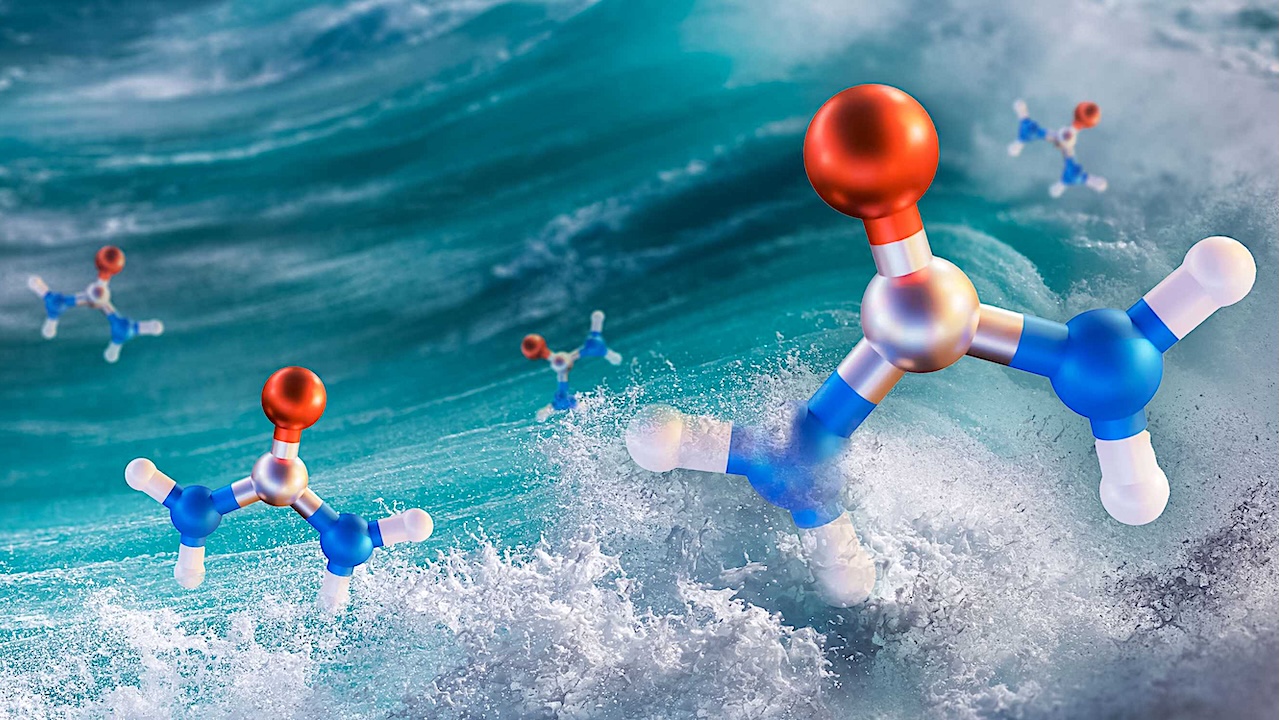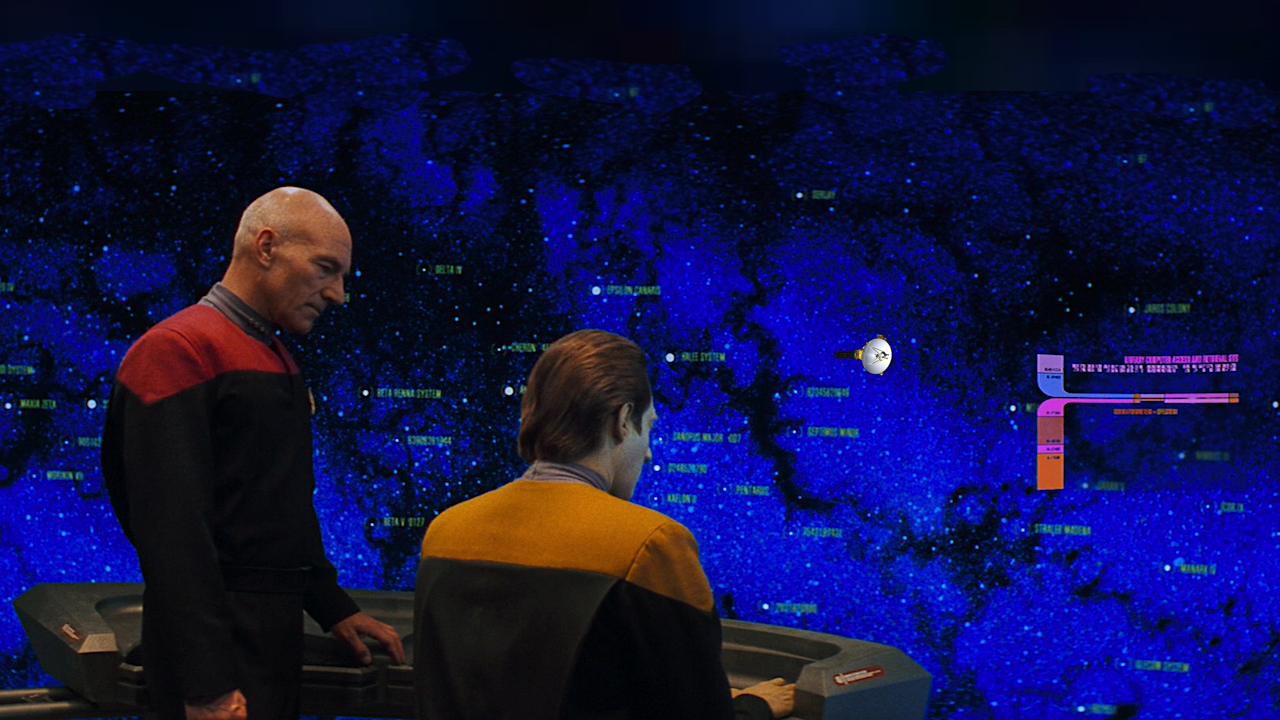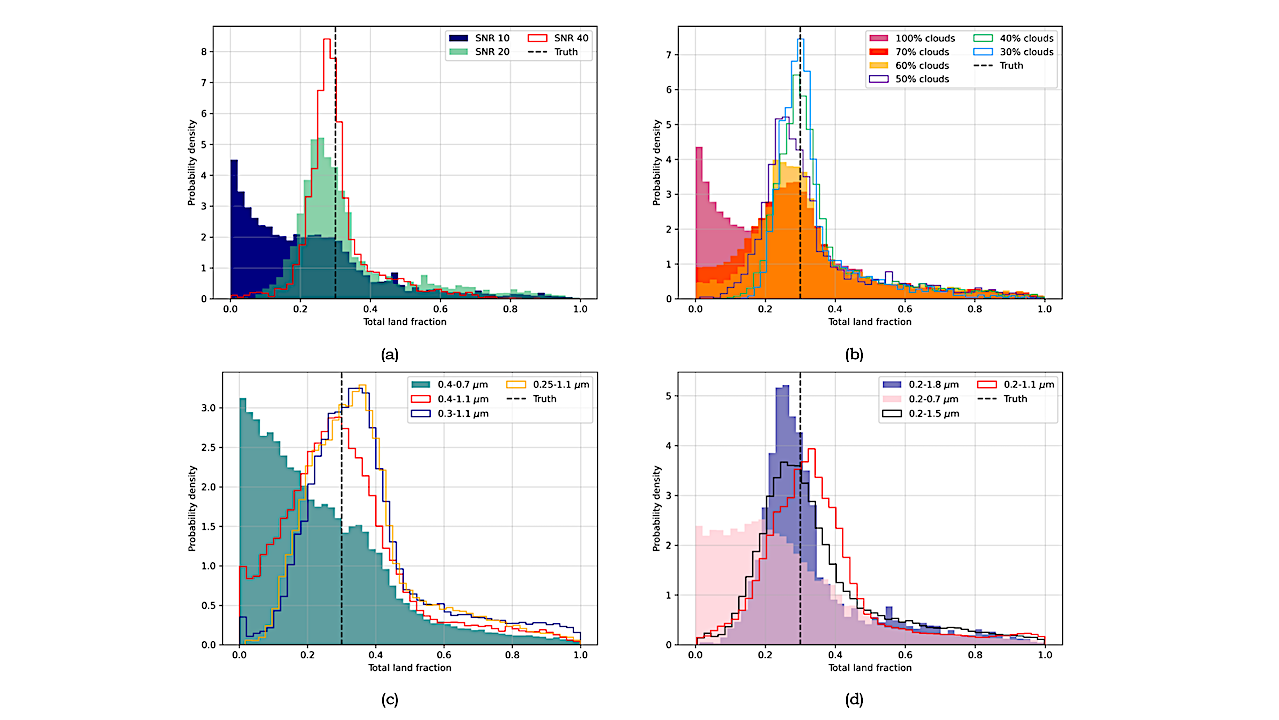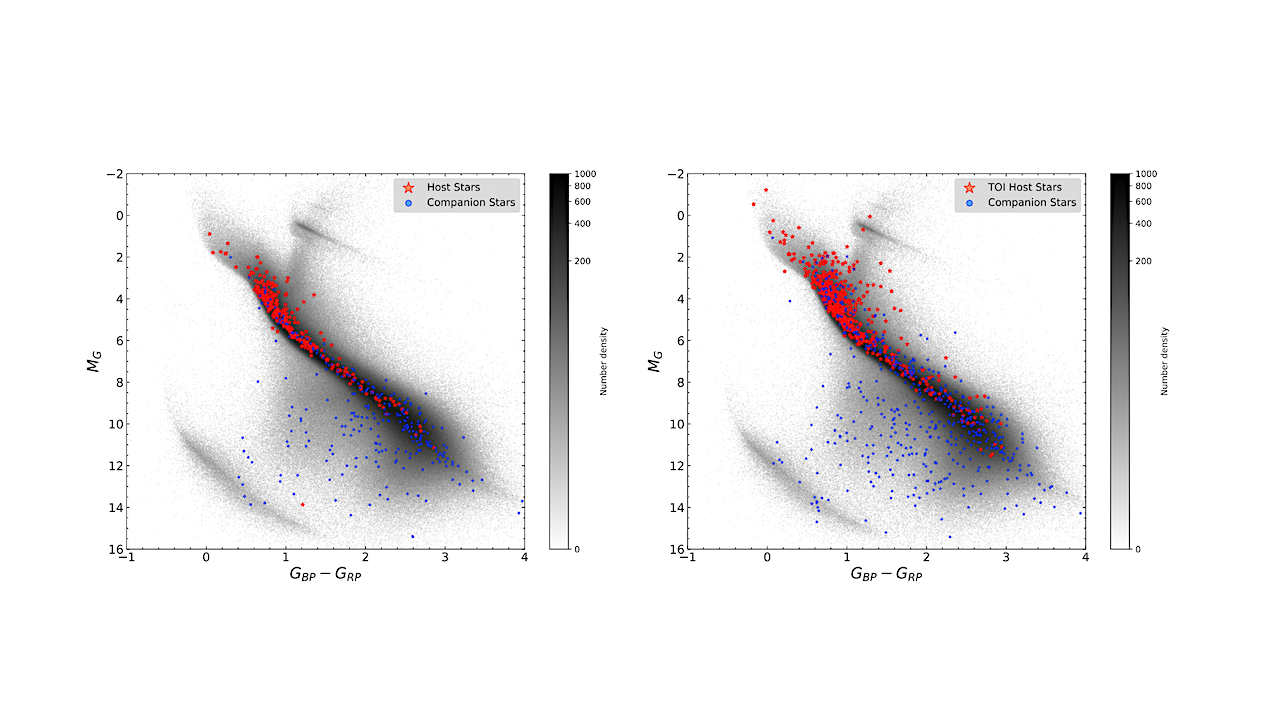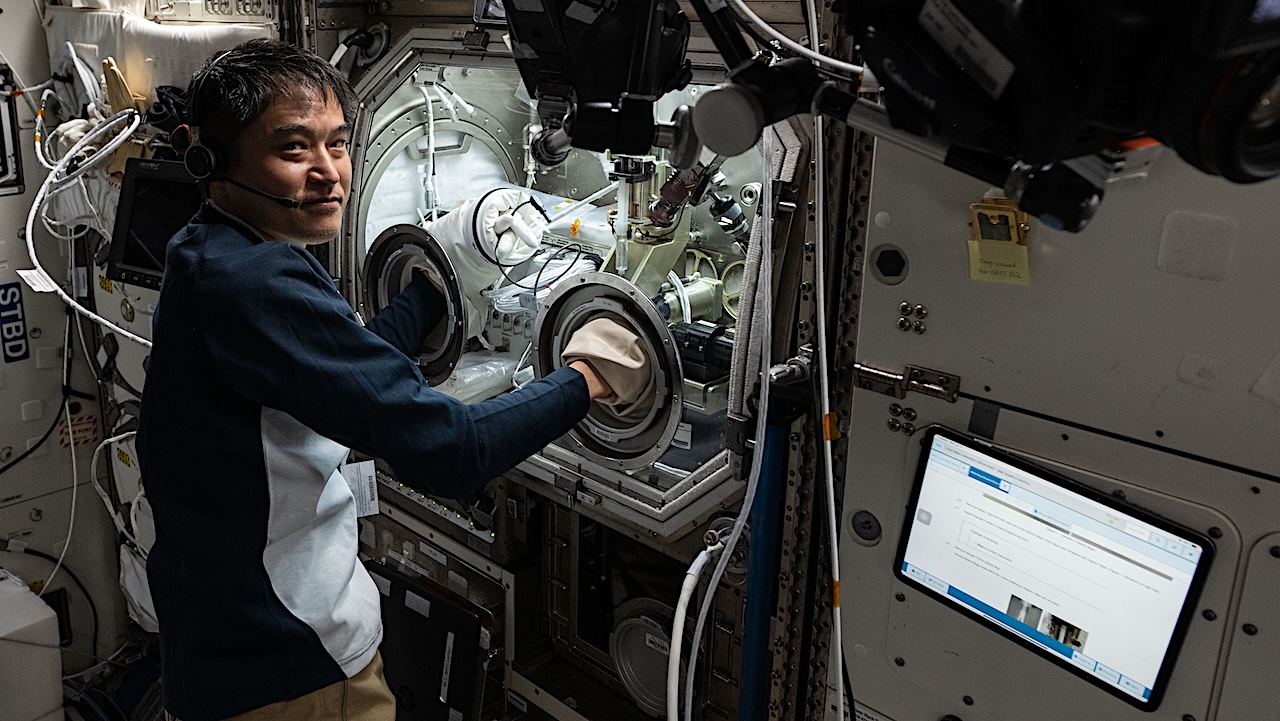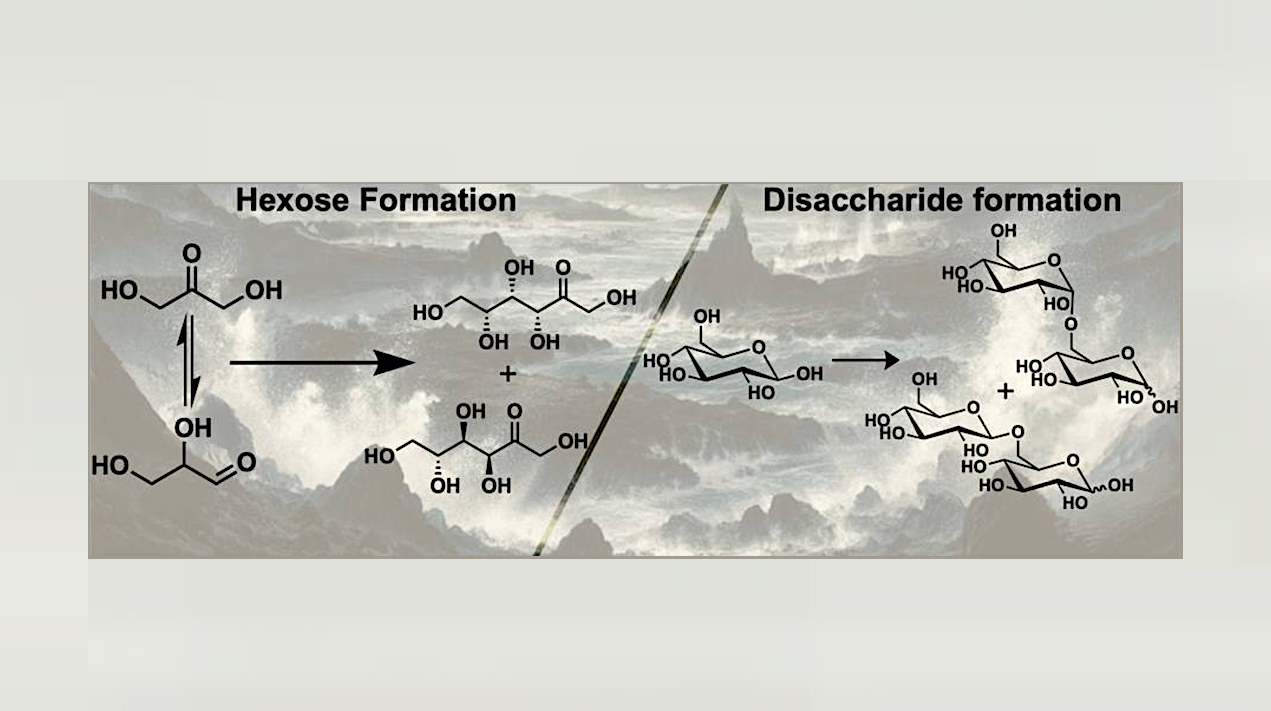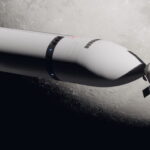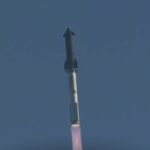CARMENES detection sensitivity map, averaged over the individual maps of the 15 stellar targets of this study. The light blue markers indicate the 11 planets included for this occurrence rate
Astrobiology79- Page
Average sensitivity of HGCA astrometric acceleration method to companions across mass and separation space, calculated from non-significant accelerations. 90%, 50%, and 10% contours are shown. All known companions of HWO
(Image: generated with Adobe Stock by Josef Kuster / ETH Zurich) Urea is one of the most important industrial chemicals produced worldwide. It is used as a fertiliser, for the
Stellar Cartography tracking session for New Horizons — Paramount/Astrobiology.com Editor’s note: Those of you in the space community know that NASA Science is facing an immense budget cut. Dozens of
(a): Total land fraction posteriors for the nominal Earth-like retrieval at different SNR with 50% cloud coverage. Given these conditions, an SNR of 20 is required for land detection. (b):
Scheme of a geothermal valley between two snow-covered Hadean volcanoes. The fumaroles, thermal springs, apron pools, and terracettes are shown based on the reconstruction of the 3.48 Ga old Hadean
The colour-magnitude diagram of the CPM companion stars to host stars of confirmed exoplanets (left) and TOI PCs (right), corrected for G band extinction. The background consists of the primary
Scientists can study protein solutions without interference from container walls and gravity driven forces present on Earth using the space station’s Ring Sheared Drop module. The device pins a drop
Graphical Abstract Understanding the chemical reactions that led to the origin of life is a fundamental challenge of chemistry. The formose reaction, an abiotic pathway to monosaccharides, provides a mechanism
Keith Cowing Explorers Club Fellow, ex-NASA Space Station Payload manager/space biologist, Away Teams, Journalist, Lapsed climber, Synaesthete, Na’Vi-Jedi-Freman-Buddhist-mix, ASL, Devon Island and Everest Base Camp veteran, (he/him) 🖖🏻 Follow on
-
 012024 in Review: Highlights from NASA in Silicon Valley
012024 in Review: Highlights from NASA in Silicon Valley -
 02Panasonic Leica Summilux DG 15mm f/1.7 ASPH review
02Panasonic Leica Summilux DG 15mm f/1.7 ASPH review -
 03How New NASA, India Earth Satellite NISAR Will See Earth
03How New NASA, India Earth Satellite NISAR Will See Earth -
 04And Thus Begins A New Year For Life On Earth
04And Thus Begins A New Year For Life On Earth -
 05Astronomy Activation Ambassadors: A New Era
05Astronomy Activation Ambassadors: A New Era -
06SpaceX launch surge helps set new global launch record in 2024
-
 07Space Force plans new ‘Futures Command’ amid pressure to speed up modernization
07Space Force plans new ‘Futures Command’ amid pressure to speed up modernization


